When you’re new to fly fishing, buying your first fly rod can be intimidating.
Even if you’re a veteran angler shopping for your twentieth rod, fly rod technology progresses so much each year that figuring out what’s what can be more challenging than hooking a spring creek brown trout.
To help you kick off your fly fishing career the right way, this guide covers everything you need to know about choosing the right fly fishing pole for you.
But first, let’s dive into some recommendations to give you an idea of what’s available.
The 16 Top Fly Rods of 2021: Outdoor Empire Reviews
These are our top recommendations for fly fishing poles in 2021:
- Best for the money: Get the Orvis Clearwater
- Best beginner: St. Croix Rio Santo
- Best for trout: Get the Redington Classic Trout
- Best cheap fiberglass rod: Get the Eagle Claw Featherlight
- Best combo: Get the Orvis Clearwater Combo
- Best starter kit: Get the Wild Water Fly Fishing Starter Package ( Read 400+ Amazon reviews )
- Best saltwater: Scott Meridian 909-4
- Best for travel: Get the Cabelas Stowaway 6
This comparison is based on the 4-weight rods of each manufacturer.
| Product | 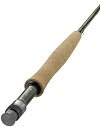 |  | 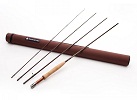 | 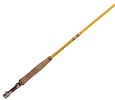 |
|---|---|---|---|---|
| Length | 7' | 8' | 8' | 6'6" |
| Rod Weight | 2.75 oz | 3.2 oz | 2.5 oz | (not specified by manufacturer) |
| Action | Mid-flex | Mod. Fast | Moderate | Ultra Slow |
| Pieces | 4 | 2 | 4 | 2 |
| Cost | Check Price | Check Price | Check Price | Check Price |
1. Best Fly Rod for the Money: Orvis Clearwater Fly Rods
Orvis is without a doubt the biggest name in the fly fishing industry. Their rods range from ultra-affordable to ultra-high-tech. Every year, they come out with new rods that push the envelope of design and performance.
The Orvis Clearwater series combines both affordability and high-performance. It’s perfect for new and experienced anglers alike who want to get the ideal rod for their dollar.
There are over 20 models in this series, each designed to excel at a particular style of fishing — freshwater, saltwater, switch, or spey.
Anglers who primarily fish freshwater species like trout and bass should choose one of the Clearwater Freshwater rods — the 9-foot 5-weight model is a great all-around size.
Orvis Clearwater Freshwater rods are made of graphite and features a mid-flex action profile designed using Orvis’ award-winning Helios technology.
In terms of performance, they have a strong backbone to achieve long casts with powerful strokes, yet are forgiving enough to form picture-perfect loops with minimal effort.
They are great as first rods but are in no way an entry-level nor cheap. So if you’re looking for a serious fly rod that can serve you well as you grow in skill, the Orvis Clearwater is one of the best you can buy.
Continue to the full Orvis Clearwater review…
2. Best Rod For Beginners: St. Croix Rio Santo
Generally speaking, learning how to cast is the most challenging and frustrating obstacle for a new fly angler to overcome.
After all, if you can’t cast, you can’t fly fish. So to shorten the learning curve, it’s wise to choose a forgiving rod that makes casting tight loops attainable from the beginning. For this, you won’t find a better rod than the St. Croix Rio Santo.
It is a graphite rod available in typical freshwater line sizes — 4, 5, 6, and 8.
It has a moderate fast action with a powerful butt and a soft tip.
With the soft tip, you can feel the rod load even at very short casting distances which is critical when learning how to cast. But with the stiffer butt section, you still have enough power to perform long casts with heavy flies.
Another aspect that appeals to new anglers is its fair price. If you’re looking for a complete setup, the St. Croix Rio Santo is available as a combo which includes:
- the rod
- St. Croix die-cast aluminum fly reel
- weight-forward fly line
- rod tube
Though it is designed to be beginner-friendly and isn’t as accurate or powerful as more technical rods, it’s one of the ideal fly rods on the market for the new angler who’s learning how to cast.
Then as your skills improve and you inevitably upgrade rods, the Rio Santo makes a great backup or hand-me-down rod to help another new angler get started.
3. Best Trout Fly Rod: Redington Classic Trout
The truth is, just about any fly rod can be used to catch trout. But if trout is your primary target, why not buy a fishing pole that’s designed specifically for the specie? That’s exactly where the Redington Classic Trout fly rod comes into play.
It’s a trout rod through and through with an emphasis on casting delicate dry flies to rising fish. But if nothing’s hatching, don’t think you can’t tie on a nymph or a streamer because it can easily serve as your do-it-all trout rod.
Aesthetically, there’s nothing fancy or extraordinary about it. It has plain brown blanks and a straightforward reel seat which isn’t the most eye-catching but gets the job done. Luckily, fish don’t care what your rod looks like.
The most defining feature of the Classic Trout, and what makes it ideal for trout fishing, is its progressive action. It has a consistent taper from tip to butt, resulting in the rod bending progressively further down its length as more casting force is applied by the angler.
This translates into a rod that casts equally well at 10 feet as it does at 50 feet. Further, the softer rod tip offers enough shock absorption for lighter tippets to be used when casting your smallest dry flies.
Though the Redington Classic Trout is a specialized rod, it doesn’t come with a “specialized” price.
Continue to the full Reddington Classic review…
4. Best Cheap Fiberglass Fly Rod: Eagle Claw Featherlight
If you walk into any specialty fly shop to buy a new setup, you’re looking at spending at least $100 for the rod and another $50 for the reel. Add a fly line, leaders, and flies to the mix and you can easily spend over $200. It all adds up fast.
But what if you want to get into fly fishing for as dirt cheap as possible? Enter the Eagle Claw Featherlight — a bright yellow fiberglass rod with a distinctly old-school vibe.
Even though it’s absurdly cheap, it performs astonishingly well. Made of fiberglass, it has a notoriously slow action as the rod bends in one smooth arc from tip to butt.
Since it is slow to load, the caster must be patient during the casting stroke. While this slow action might feel mushy to fans of fast-action graphite rods, certain anglers find it very appealing and fun to fish with.
It is only available in three sizes — a 6’6″ 3/4 weight, a 7’0″ 5/6 weight, and an 8’0″ 5/6 weight. While two different line weights can be used for each model, the rods tend to perform best with the heavier line option.
Along with the vintage-inspired yellow blanks, it has surprisingly nice components:
- real cork handle
- cherry wood reel seat insert
- gold-colored single foot line guides
If you’re looking for a cheap fly rod to get into the sport or you simply want a fun rod to play around with at the local pond, you won’t find a finer fly rod for the price than the Eagle Claw Featherlight.
5. Best Fly Rod and Reel Combo: Orvis Clearwater Combo
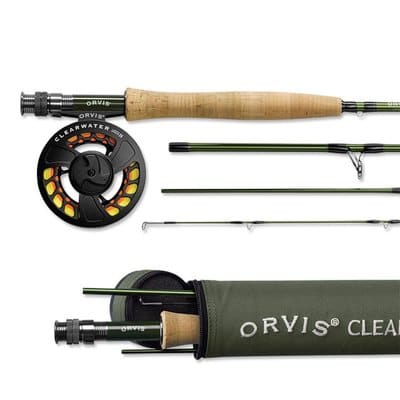
And while many such combos are designed for beginners, there are a few combo packages on the market that will provide the quality intermediate and advanced anglers demand.
The Orvis Clearwater Combo is a great example, as it not only performs well on the water, but it’s backed by the manufacturer’s 25-year guarantee.
A lightweight combo that is perfect for catching trout in small streams, the Orvis Clearwater Combo comes with a 9-foot-long, 5 weight rod and a high-quality aluminum reel. The rod breaks down into four pieces, and it comes with a protective travel tube to make it easier to hike through the woods with it to reach those out-of-the-way creeks.
Finally, the reel also features a premium disc system, which ensures it’ll spin smoothly during casts.
Learn more about the Orvis Clearwater Combo.
6. Best Fly Fishing Starter Kit: Wild Water Fly Fishing Complete 5/6 Starter Package
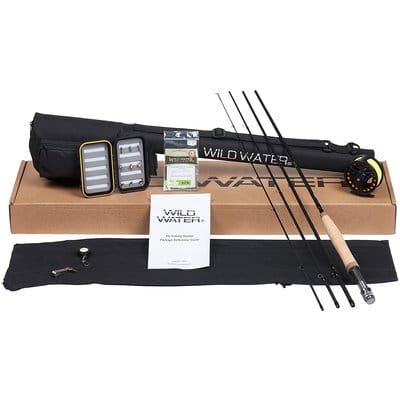
The Wild Water Fly Fishing 5/6 Starter Package is a great choice, as it not only comes with a rod and reel, but preinstalled line, backing and leader, a rod sock, a rod case, a fly box, flies, and a detailed instruction book too.
This 4-piece, 5/6-weight rod is backed by a lifetime warranty and features a slow action and a mid-flex, IM8 graphite design. The rod also includes an aluminum reel seat and a stainless-steel stripper guide.
The reel is made from die-cast aluminum and features a large arbor design. It also comes with a disc drag system that allows quick and precise adjustments. This rod is best suited for relatively small fish, including trout, panfish and bass living in shallow streams.
7. Best Saltwater Fly Rod: Scott Meridian 909-4
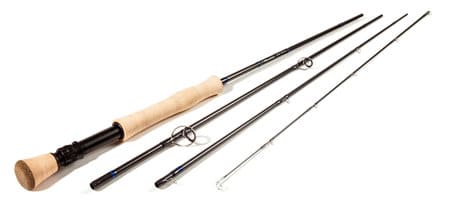
In this category, the Scott Meridian 909-4 is clearly one of the best options.
The 909-4 certainly isn’t cheap, but it provides great performance for your fishing dollar and isn’t as expensive as some of the models that professionals use.
A powerful, 9-foot-long, 4-piece rod, the 909-4 will allow you to cast more accurately and prevent many of the false casts that commonly occur with lesser rods.
This isn’t the ideal rod for super-long casts, but it will perform very well for those who typically cast between 20 and 60 yards. It also has the backbone you’ll need to wrestle feisty redfish and other species to the boat or shore.
8. Best Travel/Backpacking Fly Rod: Cabela’s Stowaway 6
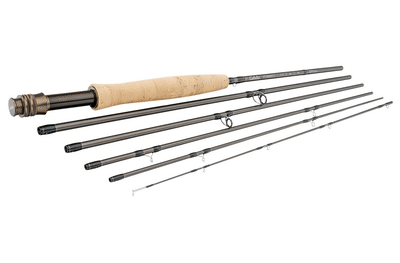
And while the travel rods of years past were rarely very good, modern travel rods – like the Cabela’s Stowaway 6 – are often great fun to use and will allow you to catch plenty of fish.
Even though these rods break down into six separate pieces (and they’ll fit in most carry-on luggage bags), they perform as well as many high-quality two-piece rods do. Made from 30-ton graphite, these rods load smoothly and allow you to cast with the kind of precision you’ll need while fishing in crowded creeks and streams.
These rods (which are available in 8 different weights and lengths) feature aluminum reel seats, chrome-plated, stainless-steel snake guides and AA-grad cork handles for maximum comfort. These rods are sold with tubes that’ll help prevent damage while your hiking around.
9. Good 3 Weight Fly Rod: Orvis Clearwater
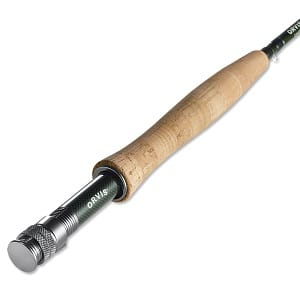
And, like many other Orvis rods, these come with the manufacturer’s 25-year warranty, so you can shop with confidence.
10. Good 4 Weight Fly Rod: Sage X 4-Piece
While 5-weight fly rods may be better suited for catching trout and panfish in a variety of rivers and lakes, you’ll usually want to step down to a 4-weight rod when trying to use a delicate presentation in shallow-water creeks and streams.
The Sage X 4-weight fly rod is a great choice for these scenarios, and it is Sage’s top-of-the-line freshwater model. This 9-foot-long, four-piece model provides incredible casting accuracy and allows you to animate lightweight lures with precision.
11. Good 5 Weight Fly Rod: Hardy Zephrus Ultralite
A 5-weight rod is usually considered the ideal “all around” choice for freshwater anglers, so it is usually wise to select a very flexible rod, which will work well in a variety of circumstances.
The Hardy Zephrus Ultralite allows you to employ a very delicate presentation, but the medium-fast action provided by the SINTRIX 440 blank construction will still allow you to set the hook with authority. This rod measures 9 feet and 9 inches long which will make long casts a breeze.
12. Good 8 Weight Fly Rod: Sage Pulse Fly Rod
Fly rods in the 8-weight range are great for larger freshwater fish, including largemouth bass and pike, among others. Accordingly, you’ll want a heavy-duty rod that provides the power you’ll need to catch these types of fish.
The Sage Pulse 8-weight fly rod provides exactly this and will help you wrestle big fish out of the water. These graphite rods with Fuji ceramic stripper guides are available in 8-foot lengths for anglers fishing in tight quarters, and 13-foot-6-inch-long lengths when maximum casting distance is important.
13. Best Fly Rod for Salmon: Temple Fork BVK
To reliably catch salmon, you’ll usually want an 8- or 9-weight rod with a very fast action to help you deliver powerful hooksets and better control these big fish. You’ll also want a pretty lengthy rod, which will make it easier to cast long distances in the windy conditions that typically occur in good salmon streams.
The Temple Fork BVK satisfies all of these criteria and more. It features rich translucent olive blanks, braided carbon fiber reel seats and ultra lightweight chromium stainless snake guides to keep this 4.3-ounce rod as light as possible.
14. Best Bamboo Fly Rod: Orvis Penn’s Creek Bamboo 4-Weight 7-Foot Full Flex Fly Rod
Many fly fishers love the nostalgia and performance a good bamboo fly rod provides, and the Orvis Penn’s Creek fly rod is one of the best around.
Ideal for fishing for trout in mountain streams, you’ll love the full-flex design, which provides plenty of casting range, and the high-quality cork handle will ensure you retain a good grip on the rod and that your hands won’t get tired while fishing all day.
Learn more about the Orvis Penn’s Creek Bamboo Full Flex Fly Rod.
15. Most Expensive Fly Rod: Oyster Legacy Series Bamboo Fly Rod
You may feel nervous using it and most anglers would probably just hang it on the wall, but if you’re looking for the most expensive rod around, the Oyster Legacy Series Bamboo Fly Rod brandishes a five-figure price tag.
For this, you’ll get a 4-piece bamboo rod, with plenty of gold hardware and exquisite detailing. You can even select the artwork included on the rod. Just don’t drop in on a rock!
16. Best Custom Tuned Fly Rods: Epic Studio Fly Rod Series

This responsiveness is part of what makes fly fishing such a challenging yet fulfilling sport.
Epic Studio sells individually handmade and customized fly rods, tuned by hand for being as responsive as possible.
All fly rods that come from Epic are handmade in New Zealand over the course of several weeks after your order is placed.
But the technology used is anything but old school. Epic pays a lot of attention to material research. For one thing, they use the best material for each purpose.
For example, their fiberglass is not standard, cross-woven fiberglass. It’s unidirectional S2 FastGlass. All of the fibers are parallel, which strengthens the rod and improves the casting feel while saving weight and thickness.
This is the same fiberglass used in military helicopter rotor blades!
Epic’s carbon fiber rods are similarly light and responsive. They’re all carbon, without any scrim (heavy reinforcement).
Then, despite each rod being custom made for you, you have a 30 day trial period so you can see if you love the rod. If you do, then Epic has a lifetime warranty. If not, then it won’t cost you anything to return the rod.
Here are some great rods we found in their collection:
The 4wt Packlight is a good choice for ultralight hikers.
The 10wt Bandit FastGlass is great for fishing for Pike and Musky, even from a kayak.
And the two-handed DH13 Spey is great for trout and salmon.
All of the above are custom-tuned when they’re built for smooth casting and responsiveness.
Plus, if you don’t want a custom-tuned fly fishing rod, you can purchase a rod blank or a rod building kit.
Factors to Consider Before Purchasing
One of the the reasons that make fly rod selection so confusing is the fact that there is no such thing as a one-size-fits-all rod.
Practically, any fish specie can be caught on the fly and therefore, different rods are needed to handle the wide variety of quarry. That’s why most fly anglers who’ve been fishing for some years end up with at least three different rods:
- one for small streams and ponds
- one for larger rivers and lakes
- one for saltwater fishing
All the terminology associated with fly rods may seem complicated. But when you break it down, there are only four aspects you need to understand to make an informed purchase — line weight, length, action, and material.
Line Weight
Every fly rod is designed to cast a line of a particular line weight.
If the line used is too light, it won’t have enough weight to load (bend) the rod sufficiently to complete the cast. If the line is too heavy, it will load the rod too much, causing your casting performance to suffer and could even break the rod in extreme cases.
Luckily, as long as you use the proper line weight your rod was designed to cast, you shouldn’t have any problems with it being too light or too heavy. And don’t worry, a rod’s proper line weight is almost always labeled on the blank near the grip.
But we’re talking about choosing a fly line weight before you buy a rod. So which should you choose?
Your fly line weight selection comes down to two factors:
- fly size
- fish size
The good news is that fly size and fish size are almost always related. Simply put, heavier lines cast larger flies and catch bigger fish while lighter lines cast smaller flies and catch smaller fish.
With that in mind, here’s a quick breakdown of the different fly line weights and what they can be used for:
- 0, 1, 2
These ultra-light lines are made for the most nimble fly rods and are typically reserved for pursuing the smallest fish species with the tiniest flies — think small stream brook trout and panfish.
If you have a lot of size 28 or smaller Adams dry flies in your box, go ahead and grab a 1-weight rod. Otherwise, better go up a few sizes.
- 3 & 4
3 and 4-weight lines and rods are still on the light end of the scale and are the line weights of choice anytime light tippets are used to make subtle presentations with small flies to fish like trout and panfish.
- 5, 6, 7
The most common line sizes for all-around trout fishing. Five weight rods are by far the most popular fly rods in existence and can handle 90% of the trout fishing scenarios you’ll encounter.
Six and seven weights are also very versatile and are helpful when casting larger streamers and poppers or in windy conditions.
- 8, 9, 10
The go-to sizes for saltwater species like redfish, bonefish, and small to medium-sized tarpon. They are also employed on rivers when fishing for salmon and steelhead when super long casts with big, heavy flies are needed.
- 11, 12, 13 & up
These extra heavy line sizes are reserved for true big-game fishing. 11 and 12 weights are used for bigger-sized tarpon as well as other inshore and nearshore species like barracuda, amberjack, and giant trevally.
Line weights 13 up to 16 are primarily used for offshore fishing when marlin, tuna, and sharks are the target.
Length
While fly line weight is a relatively fixed parameter based on your target species and fly size, fly rod length is based more on personal preference.
Fly rod models of certain weights are offered in different lengths. For example, a 5-weight Orvis Clearwater as mentioned earlier is available in lengths of:
- 7’6″
- 8’6″
- 9′
It’s widely agreed that 9-foot fly rods offer the best balance of casting performance and accuracy, which is why there are so many 9-foot fly rod models on the market. If you’re shopping for a first fly pole, go with a 9-footer and you’ll be safe.
However, there are times when shorter or longer fly rods are beneficial. If you primarily fish small mountain streams lined with thick vegetation and overhanging trees, a 7-inch rod may give you an advantage when casting in tight pockets.
Keep in mind that shorter rods move less line on each casting stroke which can make long casts more difficult.
Some anglers find longer rods in the 10 to 12-foot range that are helpful when they need to keep as much line as possible off the water. This is often the case when performing specialized techniques such as Euro or Czech nymphing.
Another use for longer rods is when using two-handed techniques like spey or switch casting which require different style fly rods altogether — let’s stick with single-handed rods for now.
If you have to place your fly rod order, just remember that 9-foot rods are the easiest and most accurate to cast.
Action
Basically, a fly rod’s action refers to its flexibility and how it loads the weight of the fly line during a casting stroke.
It plays a significant role in how it casts, how it handles the weight of a fish, and most importantly, how it feels in the hand — something that’s difficult to put in words and must be experienced.
Some fly pole manufacturers describe a rod’s action in terms of a flex profile or flex index which describes how much and at which point the rod flexes.
A rod’s flex index is determined by its taper or the physical shape of the rod blanks from tip to butt.
- Some rods have soft, flexible tips and stiff butt sections.
- Some are uniformly stiff throughout the entire length.
- Other rods, like the Redington Classic Trout, have more gradual tapers that start out soft at the tip then consistently become stiffer towards the butt.
You’ll also see rod action described in terms of “fast” and “slow.” This refers to the rate at which the rod rebounds after being bent which is a reflection of the rod’s stiffness — a stiffer rod has a faster action, while a more flexible rod has a slower action.
Fast action rods are often preferred when power, distance, and accuracy are needed. Slow action rods offer a better feel of both the line in the water and the fight of the fish.
Most fly rods that are geared towards beginners have moderate actions — not too fast nor too slow. They load quickly for smooth casting, offer a good feel of the fish, yet stiff enough for the occasional long cast. When in doubt, go with a moderate action fly rod.
Material
Graphite
The vast majority of today’s fly rods are made of graphite. These fishing sticks are:
- incredibly strong
- lightweight
- easy to cast
- has a great feel
Fly rod designers and manufacturers love graphite because it can be rolled into practically any taper imaginable, leaving endless room for performance improvements.
Different grades of graphite are used in fly rod construction. Generally, the higher the grade, the lighter, stronger, and more expensive it is.
Fiberglass
Before graphite became the material of choice, the best fly rods were made of fiberglass.
Fiberglass is very robust and durable while being very flexible, resulting in fly rods with a distinctly slow action. Today, anglers are rediscovering fiberglass as a relevant fly rod material, praising it for its unique feel when casting and fighting a fish.
Bamboo (AKA Cane)
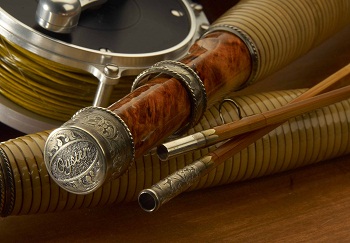
Epic series
Before fiberglass revolutionized fly rod performance, any fly rod worth its salt was made of bamboo.
Unlike graphite and fiberglass rods which can be produced on a large scale with machines, bamboo fly rods are made exclusively by the hands of craftsmen. For that reason, they are among the most expensive rods available.
Action
They load with minimal effort, making quick, delicate casts a breeze. Although it’s easier to load it, they aren’t optimal for shooting line or casting great distances.
Cane rods excel at close-range dry fly fishing where subtle presentations are the key to success.
Look Into These Aspects Too!
How Many Pieces?
As we mentioned, the most common fly rod length is 9 feet. You might be wondering how one transports a 9-foot rod. Strap it to the roof of the car?
Practically, all modern fly rods break down into two or more pieces. Connection points in the rod, called ferrules, allow quick assembly and disassembly, turning a 9-foot rod into four easily manageable pieces. Slide those pieces in a case and you’re ready to go.
These days, four-piece rods are the most common. You can still find two-piece rods but these are typically shorter in the 6′ to 7’6″ range.
Six, seven, and even eight-piece fly rods have become popular in recent years especially among anglers who travel a lot or take their rods on backpacking trips.
When these travel-friendly rods first came out, they didn’t offer the best casting performance compared to their four-piece alternatives. But as rod technology advanced, this has become less of an issue.
If you’re interested in a packable travel fly rod, check out the Orvis Clearwater Frequent Flyer, Redington Classic Trout 6-Piece, or the Echo Trip 8-Piece.
Should You Go for a Fly Rod Combo?
The rod is only part of the fly fishing gear equation. Once you get a rod, you still need:
For a new fly angler, choosing all those separate components can be a serious hurdle to getting into the sport. Manufacturers realized this and now, many offer fly rod and reel combos — package deals that have everything a new angler needs to get started.
In many ways, fly rod and reel combos are a great convenience and make the purchasing process easier. The problem with these is that many times, the reels and fly lines are of inferior quality compared to what you’d buy separately.
There’s a high likelihood that you may end up replacing these components in due time, so it might be better to buy the good stuff from the beginning.
Although it’ll take more time to research and shop around, you’ll end up with a nicer overall setup if you assemble your rod and reel yourself. However, if you’re simply testing the waters of fly fishing, a combo kit is an excellent way to get started.
Like we mentioned before, the St. Croix Rio Santo is offered as a rod and reel combo and is one of the nice package deals on the market. Orvis and Redington also offer combos worth considering.
Leading Fly Fishing Rod Brands
When you’re ready to upgrade your starter fly rod, these are the four top-tier rod manufacturers you want to check out.
Sage
Sage makes fly rods with a heavy emphasis on high performance and innovation. The company was founded in 1980 by Don Green and Bruce Kirschner in Bainbridge, Washington and has been producing “specialty products for specialty anglers” ever since.
In the 1980’s, Sage was one of leading manufacturers producing graphite fly rods.
These early graphite rods were built with the company’s Graphite II Technology which utilized a concept developed by Don Green called Reserve Power — the idea that a fly rod should never run out of casting power.
They became known for these fast action rods capable of achieving tremendous line speeds for super long casts. Through continuous development, they became the first manufacturer to produce fly rods built specifically for saltwater anglers.
Their latest innovations in fly rod technology are centered around several proprietary graphite materials including Konnetic HD, Generation 5, and Graphite IIIe, each offering unique benefits for their particular rod designs.
One of the most defining aspects of their products is that every rod is designed and built by hand in their factory at Bainbridge Island in Washington.
They make all their graphite rod blanks in-house unlike most companies that buy pre-rolled blanks from outside sources (often overseas). This important fact is the reason for the exceptional quality and top-shelf price of their fly rods.
Most Sage fly rods feature fast or ultra-fast actions. They are primarily designed to suit the needs of advanced anglers, which makes it the only downside of their rods.
Although they offer significant performance benefits, beginning fly anglers may find them difficult to cast.
G. Loomis
The G. Loomis rod company was started by an avid sportsman who was also a genius-level machinist — the one and only, Gary Loomis.
Inducted on the IGFA Hall of Fame in 2007, Gary Loomis had an enormous impact on the fishing world as a whole. His early designs and innovations set the pace for the future of rod design.
Although he is still hard at work, designing and making parts and materials that extend far beyond the fishing world, he is no longer a part of the G. Loomis rod company. It is already owned by Shimano though the rods are still branded as G. Loomis.
Despite this changing of hands, G. Loomis fly rods are still renowned for being high-performance products. One of the main reasons why their rods are still good is because of their lead rod designer — world champion competition fly caster, Steve Rajeff.
Their newest and most premium fly rod, the Asquith series, is designed by Rajeff as a collaboration of G. Loomis and their parent company Shimano.
Using Shimano’s proprietary Spiral X graphite, the Asquith fly rods are incredibly strong yet feel light in the hand even in the heavier line weights.
Although G. Loomis is owned by Japan-based Shimano, all G. Loomis fly rods are still built by hand from start to finish in Woodland, Washington. Its quality has remained consistently high over the years.
But some customers feel that their customer service has gone downhill since its original owner left.
Orvis
Founded in 1856, the name “Orvis” has become synonymous with fly fishing. As one of the oldest and longest-running manufacturers and suppliers of fly fishing gear and apparel, no other company has as big of an impact on the fly fishing lifestyle.
Although the brand now encompasses a wide sphere of products and services — everything from casual clothing and dog beds, to custom shotguns and shooting schools — they continue to produce some of the best fly rods on the market.
While Orvis has a broad lineup of lower-priced fly rods such as their Encounter and Clearwater series, their high-end offerings are what turn the heads of the savviest anglers.
Currently, their top-shelf offering is the Helios II series which has won numerous awards and is their strongest fly rod ever created — 20 percent stronger than the original Helios.
Orvis makes their Helios II rods in a wide range of line weights and tapers, each designed for specific fly fishing uses including freshwater, saltwater, big game, and two-handed spey and switch.
Their fly rods are made by hand in their workshop at Manchester, Vermont by true craftsmen and women of the trade.
On top of that, Orvis is a big proponent of natural conservation, committing 5% of their pre-tax profits to a diverse set of conservation groups and projects.
R. L. Winston Rod Co.
The R. L. Winston Rod Co. started in 1929, producing bamboo fly rods using processes and designs that revolutionized the fishing world.
In those early days, Lew Stoner (the “L” in R. L. Winston) developed a patented technique for building hollow fluted bamboo rods, greatly reducing their weight while increasing their power.
These were the top choice among competition casters of the day — both fly and conventional — and were used to set and break several world records.
Although the R. L. Winston Rod Co. has changed ownership several times, their efforts in innovation have never ceased. In the 1970’s, they produced some of the leading fiberglass rods and quickly moved to graphite.
In the 2000’s, their rods rose to a new level of performance with the company’s heavy focus on proprietary blends of graphite and boron — a chemical element turned into fine tungsten wires that are lighter than aluminum but five times stronger than steel.
Now, Winston makes some of the most solid casting rods in the world where boron is a critical component.
Though R. L. Winston took a space-aged turn for the better, they still produce their all-time classic bamboo rods. If you stick with fly fishing long enough, you’ll end up craving for one of these handcrafted pieces of functional art.
Better start saving up now because a bamboo Winston will cost you.
Final Thoughts
Fly fishing is a gear-centric sport, but no gadget or tool is more important than a well-made fly rod. Choosing the right rod may seem difficult but keep in mind that there’s a good chance of ending up with more than one gear.
So if you’re just starting out, it is suggested to choose a smooth casting rod that can handle a wide variety of fishing scenarios then get busy casting a fly rod.
When you’re ready for an upgrade, find a good local fly shop that carries some of the premium brands we covered and test cast as many different models as you can.
This article is part of our fishing gear guide.
FAQ
Why are fly rods so expensive?
There are fly rods available in a wide range of prices, some more expensive than others. Generally, the price of the rod increases as more features are incorporated.
Modern fly rods are made using modern technology and a variety of composites to reduce weight or increase performance. Some are handmade or produced in limited quantities. Many are covered by extended warranties. Each of these factors results in increases in price.
Of course, it often comes down to something much simpler — supply and demand. Anglers are willing to pay the increased price, so manufacturers continue to charge more.
Can a broken fly rod be fixed?
Most fly rods are backed by a warranty, so trying to fix it is usually not worth the effort. However, if you are in the field and break a rod, you will not have the ability to get a replacement right away.
In this case, you can try temporary fixes for broken guides or tips and be relatively successful. But if the rod breaks more than 3 or 4 inches from the tip, the chances of success are low. Even if you do manage to mend the break, the action and strength will be compromised.
Can I take a fly rod on an airplane?
TSA regulations permit rods and reels as both checked or carry-on luggage. However, depending on the size of the rod tube, it may not meet maximum size limitations for a carry-on.
It is best to check with your carrier before traveling to confirm whether it will fit in the overhead compartment.

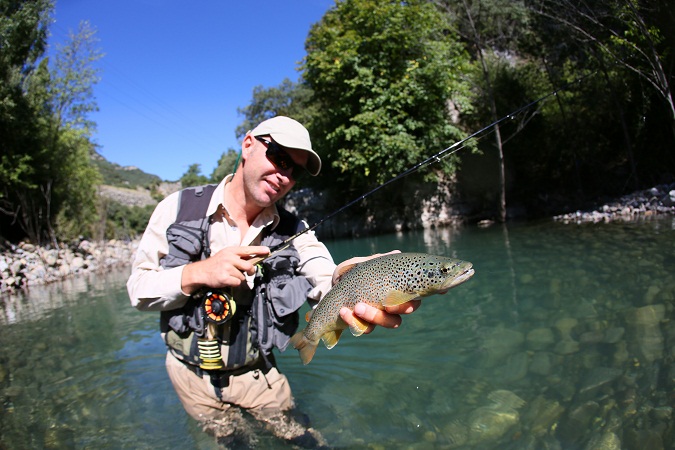
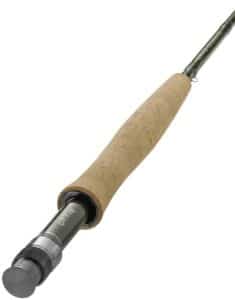

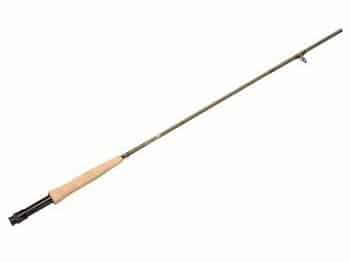
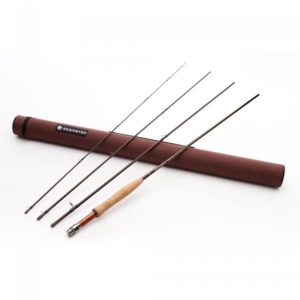
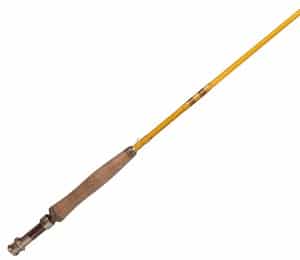
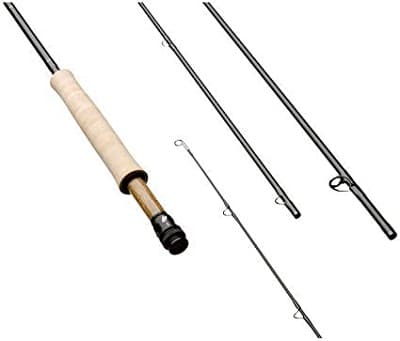
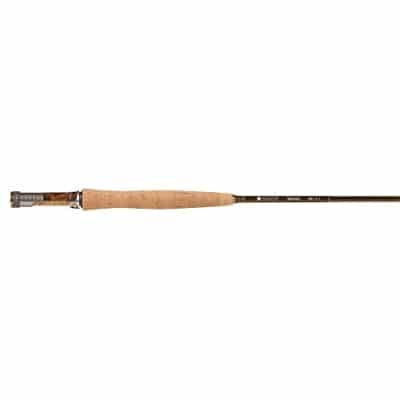
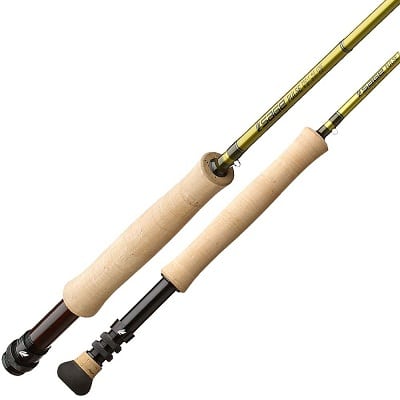
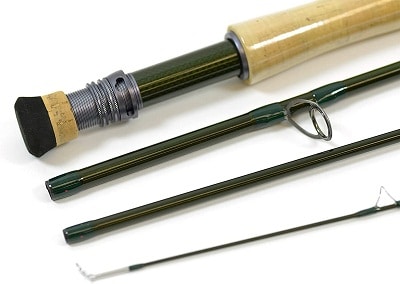
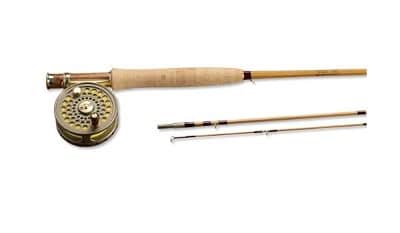
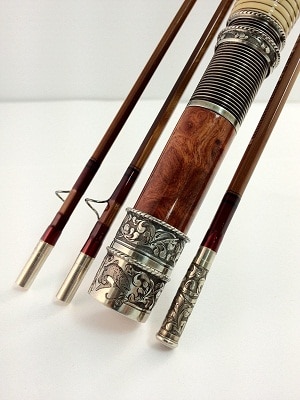

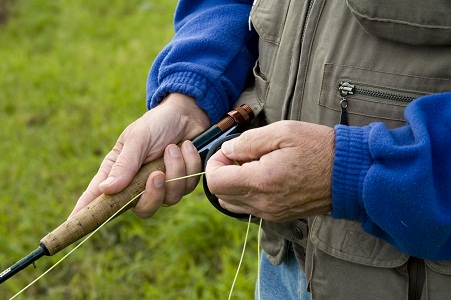
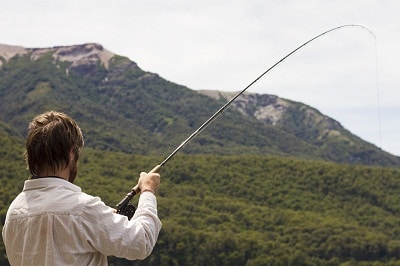
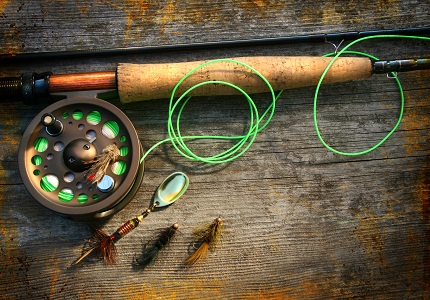

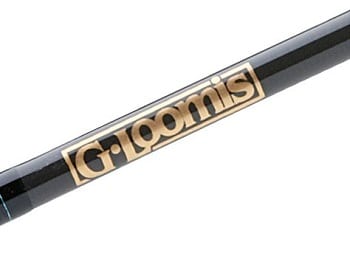
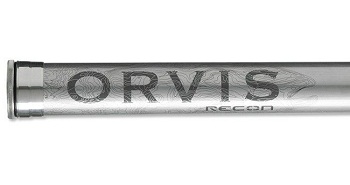
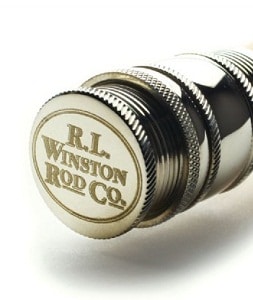
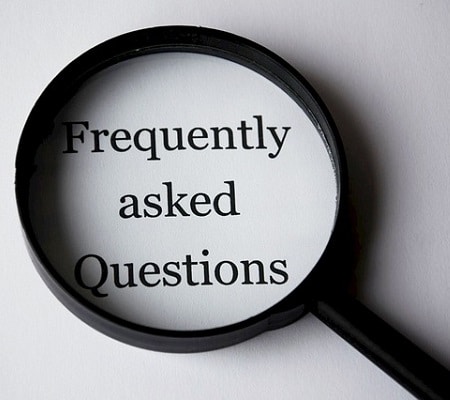

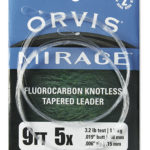
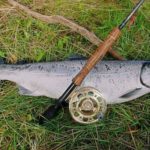
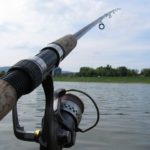
Comments are closed.